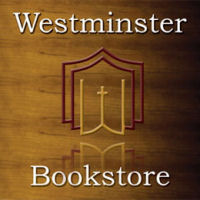The last chapter asks the question, “When did New Testament writings first begin to be viewed as Scripture?” According to the extrinsic model - Kruger calls this view the “big bang model” of canon - it was not really until the end of the second century that these documents came to be viewed as Scripture. Of all the chapters in the book, I think the average reader will probably find this chapter the most interesting, because Kruger goes through sources prior to the end of the second century to show that these writings were regarded as Scriptural and authoritative at a time when the extrinsic model should regard as shocking.
Irenaeus and His Contemporaries
Kruger begins with Irenaeus, whom most advocates of the extrinsic model offer as the singular most important figure. To these scholars, “Irenaeus is an innovator” (157). They see his naming of a canon as something prior Christians would have been scandalized by. But Kruger argues that “there are indications that books were received as Scripture prior to the time of Irenaeus.”
One of the first things Kruger argues for is that Irenaeus does not see himself as an innovator, but as passing along that which he himself has already received. After sorting through some of the opposition that is often made to Irenaeus in this regard, Kruger concludes that “there are no reasons to regard Irenaeus’ most controversial claim - that the church receives four and only four Gospels - to be a new idea in his day” (162).
Kruger then looks to the Muratorian fragment, arguing that its existence contemporaneous with Irenaeus “is problematic.” It means that there was already “restriction and limitation” to the canon by 180 A.D. and that it was not Irenaeus who was responsible for it.
Another important figure is Theophilus of Antioch, who wrote an important document, To Autolycus in 177 A.D. Kruger notes that “Theophilus places the ‘Gospels’ on the same level of inspiration and authority as the Old Testament Prophets” (164). He also puts a citation of Luke 18:27 alongside of “citations from Genesis and Isaiah” (165) which shows the significance he attached to the Gospel writings.
Clement of Alexandria, writing in 198 A.D. (“slightly later than Irenaeus”), affirmed many books of the New Testament canon. “He received all thirteen Epistles of Paul, Hebrews, Acts, 1 Peter, 1 and 2 John, Jude and Revelation” (168).
So far in the book, Kruger helpfully summarizes: “According to…influential and geographically diverse sources at the end of the second century - there was a core collection of scriptural books in place that the church fathers themselves did not view as newly established” (169).
Prior to Irenaeus
In the next section, Kruger goes back before Irenaeus. “If the New Testament canon did not pop into existence overnight, then we should expect to find some remnants of its existence during this earlier time period” (169). Justin Martyr, for starters, in 150-160 A.D. knew Paul’s letters. In addition, “Justin also seems to show knowledge of Acts, 1 Peter, Hebrews and Revelation” (176) and regards them with the same authority he regarded Old Testament books.
Papias, writing around 125 A.D. was a friend of Polycarp and “had heard the apostle John preach…he knew the daughters of Philip the Evangelist…[and] plainly declares that the source of his information is ‘the Elder’ who is likely to be ‘John the Elder’” (182). Papias is helpful with regard to Mark’s Gospel, because he “assures the reader of the reliability of Mark’s account when he says that Mark made sure ‘to leave nothing out that he heard’” (183-184). “It appears that Papias also knew 1 John, 1 Peter, Revelation and also some Pauline epistles…[and] would have known John’s Gospel” (186). All of this “suggests a Fourfold Gospel in the first half of the second century” (186).
The Epistle of Barnabas, believed to have been written around 130 A.D., appears to cite Matthew 22:14. Kruger spends some time arguing that this is probably a written source, not an oral source as some scholars speculate.
Ignatius, writing in 110 A.D., seems to have had an extensive knowledge of the writings of Paul. One scholar is “quite confident that Ignations knew at least four of these - 1 Corinthians, Ephesians, and 1 and 2 Timothy” (188). Kruger says that he also “seems to know Romans, Philippians and Galatians…the key point is that Ignatius not only has a Pauline letter collection, but mentions it to the Ephesian church with full expectation that they are also aware of it” (190).
Polycarp, writing around 110 A.D. “distinghishes Paul’s authority as an Apostle from his own authority as a bishop” (193). “Scholars generally agree that Polycarp knew Romans, 1 Corinthians, Galatians, Ephesians, Philippians, and 1 and 2 Timothy. Again, Polycarp may have known more letters of Paul than these, but he simply doesn’t use them in his letter to the Philippians” (194). There are also “indications that Polycarp regarded Pauline letters as ‘Scripture’” (195). “Polycarp also knew 1 Peter and 1 John…[and] does appear to quote from some of the Synoptic Gospels on a number of occasions” (196). It is highly significant that these things are happening so near to the time of their writing. This would have been within 50-60 years of the time of the writing of most of the books of the New Testament!
1 Clement, written in 96 A.D., uses many New Testament texts. “At a minimum, scholars are agreed that 1 Clement certainly uses 1 Corinthians, Romans and Hebrews, and a number of scholars find it probable that he also knew Galatians, Ephesians, Philippians and Titus” (197). One scholar argues that Clement knew all of Paul’s letters. Kruger finds it significant that, like Ignatius, “clearly expects that his audience also has access to the very same ones” (197). Among the most amazing things Kruger quotes is a passage from 1 Clement 47:1-3 where he refers to 1 Cor, telling his readers to read Paul’s epistle and attributing inspiration to Paul by saying he sent the letter “pneumatikos” or “in the Spirit” (198). He also appears to be exhorting his people to read Paul’s letter publicly in the worship service.
Kruger also goes back further than 96 to the actual New Testament itself. He points to 2 Peter 3:16 to show that Peter regarded Paul’s writings as Scripture. He also points to 1 Timothy 5:18, arguing that Paul quotes from Luke 10:7 in the second half of the verse. Even if the reader is skeptical about Kruger’s argument here, he points out that “it should still be acknowledged that 1 Timothy at least regards some book…to be Scripture alongside the Old Testament” (202).
All of this, of course, lends credence to Kruger’s contention in this chapter that “the origin of a new corpus of scriptural books should not be conceived of as a ‘big bang’ type of event, extrinsically imposed on the church, but as something that grew gradually over time with roots that extend further back in the history of the church than previously allowed” (158).
Conclusion
Having pressed back hard on these five major tenets of the extrinsic (“big bang”) model of canon, Kruger draws out three major conclusions.
1. “Historical investigations, like scientific ones, often operate on the basis of models, or what we might call paradigms” (209). His point here being that he hopes proponents of the extrinsic model will acknowledge the place of presuppositions in their own argumentation and especially in their standards of what they will and will not accept as evidence.
2. “There are enough problems with the extrinsic model to raise serious questions about its viability” (209). This doesn’t mean that the extrinsic model doesn’t have positive aspects to contribute, but that it ought not to hold the field in canon studies.
3. “More scholarly consideration should be given to what we have called the intrinsic model” (209).
Kruger offers his concluding paragraph:
The intrinsic model argues that the idea of canon was built into the DNA of the Christian religion and thus emerged quite naturally. In this sense, the canon was like a seedling sprouting from the soil of early Christianity—although it was not fully a tree until the fourth century, it was there, in nuce, from the beginning (210).




No comments:
Post a Comment
Before posting please read our Comment Policy here.
Think hard about this: the world is watching!